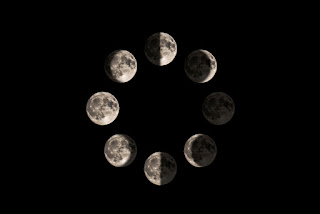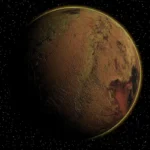
Images of the moon in each major lunar phase, in a circle diagram. Detail of craters and surface. Dark areas in shadow but still visible
Moon phases are the various appearances of the Moon as seen from Earth. The moon has eight major phases: new moon, waxing crescent, first quarter, waxing gibbous, full moon, waning gibbous, third quarter, and waning crescent. These phases occur approximately every 29.5 days.
Because the moon takes nearly the same amount of time to complete one revolution as it does to complete one rotation, we always see the same side of the moon.
The moon appears to disappear during a new moon phase, but the Sun is shining on the opposite side of it.
An eclipse occurs when the Moon, Sun, and Earth align.
The Moon’s orbit around the Earth is said to be elliptical in shape.
The moon orbits the Earth in about 27.3 days.
The Moon would be moving counterclockwise around Earth if you were above it, looking down from the North Pole.
It is estimated that the Moon is 4.5 billion years old.
The Moon is approximately 250,000 miles from Earth.
The Moon travels around Earth at an average speed of 2,288 miles per hour.
If you could drive to the Moon, it would take you 130 days to get there.
It is a common misconception that the Moon emits light, when in fact it reflects the Sun’s light.
We would not be able to see the Moon if there was no Sun, and Moon Phases would not exist.
In February, there are times when there is no full moon.
A Blue Moon occurs when there are more than one full moon in a month.
Because tides are affected by the Moon’s gravitational pull, more tide activity occurs during a full moon.










Your post was like a cup of hot cocoa on a winter’s night – cozy, comforting, and simply delightful! I couldn’t help but smile as I read through your well-crafted words.